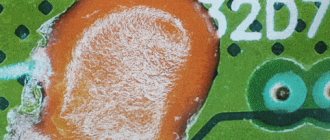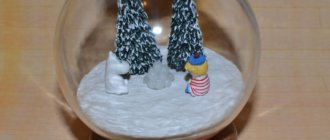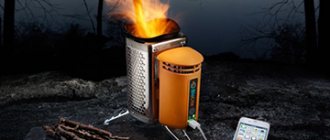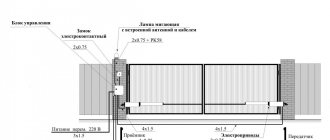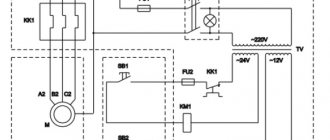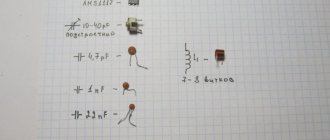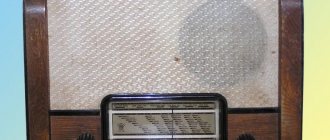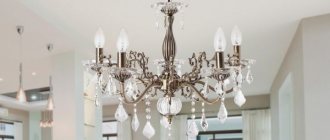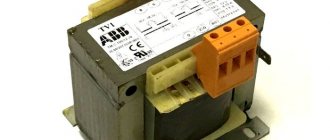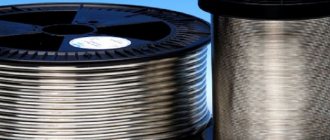What is Conductive Adhesive
Glue is a viscous substance that is used to join a variety of materials. There are many types of adhesives, each of them has its own characteristics and properties. Among the most popular are stationery (PVC for papers), linoleum (for flooring), conductive (for various electrical circuits and mechanisms).
Photo - Conductive glue.
A conductive two-component adhesive must have the following features:
- Dry quickly, this is necessary for speed of work;
- Have a knitting consistency so that parts of the pattern that do not need to be glued are not damaged during processing;
- Have high adhesion and resistance;
- If you want to use a soldering compound, then you need to choose a heat-resistant glue;
- Be safe for the environment and workers.
This substance is necessary for repairing electrical circuits (keyboards, consumer electronics), constructing various heating mechanisms, floor coverings (warm floors, tiles, glass), etc.
Photo - Elast.
You can buy conductive glue without any problems at any construction or electrical store, the average price is from 100 rubles per 25 grams. At the same time, taking into account the consumption, we see the following picture:
- For PVC coatings, the consumption is approximately 250 grams per square meter;
- Non-PVC (textiles, metal) – 400 grams.
It is much cheaper to prepare conductive glue yourself, especially since the components can be bought at any radio store. Let's look at the most popular recipes.
General concept
Conductive paste allows you to increase the service life of electrical wiring contacts to seven years. It reduces by half the value of the transition resistance at the electrical contact points. This product works at temperatures up to 350-4000 degrees. In such conditions, it allows you to preserve all the functional features of contact connections.
There is a separate type of product called anti-corrosion conductive paste. In addition to the main tasks of reducing contact resistance, it protects contacts from moisture and aggressive environments.
Electrically conductive lubricants also perform an energy-saving function. Experts have calculated that using just 1 kg of the product can save up to 100 thousand kW of electricity per year.
Necessary properties of electrically conductive adhesive
A mandatory element in the glue is powdered nickel or fine silver. Alternatively, crushed palladium can be used. The listed components give the composition characteristics of electrical conductivity. The higher the content of an element in a substance, the better the conductivity properties, but the strength of the connection decreases.
To impart good elasticity, without compromising other characteristics, a polymer binder is added to the adhesive composition. The component also provides reliable adhesion to the surface and reduces density. Any type of conductive adhesive must have the following properties and features:
- dry quickly after application to the surface for faster work;
- have a viscous structure so as not to damage microcircuits and other elements during use;
- have high surface adhesion and resistance;
- do not cause harm to people and the environment.
Features and requirements
Binding components and proportions are selected taking into account good elasticity in the frozen state. It should be understood that a percentage increase in conductive components worsens adhesion. Drying for too long makes it difficult to perform work operations. In addition to temperature stability, high safety requirements must be met. As a rule, such mixtures are used in enclosed spaces at a short distance from the user. We need to minimize air pollution.
Areas of application
Amateur radio circuits and homemade designs. In confined spaces, it is difficult to manipulate the soldering iron and solder. Some chips and other expensive electronic components are damaged when overheated. These and other practical problems are solved with the help of conductive adhesive compositions. Examples:
- fastening of piezoelements in radio equipment;
- restoration of heating “strips” on the rear window of a car, torn tracks of printed circuit boards;
- connecting miniature parts while simultaneously creating a conductor;
- reproduction of cold soldering technology.
If necessary, conductive varnish will provide protective functions. The application of such adhesive compositions is used to create “flat” heating elements of a heated floor system.
How to make conductive homemade glue
A very common method is where graphite plays a major role. You need to buy the cheapest quick-drying glue (“Moment”, “Elephant”, “Second”) or varnish. Carefully unscrew the foil from the back of the tube, do not damage the seal on the lid. Now we need a soft pencil M4 or M2. We take the lead out of the pencil, knead it thoroughly to the consistency of powder and pour it into a tube of glue. Use a long match to mix our composition and twist the foil; be sure to secure it at the bottom with pliers so that the adhesive does not leak out during operation.
How to make conductive glue with your own hands?
Below are some simple recipes for making conductive glue, gel or lubricant. There is nothing complicated in this process. The only difficulty is finding the necessary components of such glue for contacts.
Recipe one
This recipe for making conductive glue with your own hands is the simplest. For people who don’t really want to spend a lot of time making it, this method is definitely suitable. So, the conductive glue will be based on ordinary superglue in a tube. It can be purchased at many hardware stores and markets. Superglue has certain features that will ensure the creation of a conductive adhesive. Firstly, graphite powder dilutes extremely well in superglue. Secondly, it should be noted that in large volumes this glue hardens rather slowly.
As has already become clear from the above, to make conductive glue you will need graphite powder. There is no need to worry about where you can get it, since it is easy to obtain by chopping the lead of an ordinary pencil. To do this, you can use sandpaper or a file.
Famous brands
There are not many brands of conductive adhesive manufacturers on the market. Among them there are both Russian and foreign companies. Below we list the most proven brands of adhesives:
- Conductive adhesive grade Kontaktol on silver 2g is intended for creating highly elastic, durable surfaces. Produced on a silver base. It dries quickly, making it easy to use. You can purchase Kontaktol at any radio store or market. However, it should be noted that most reviews about this brand are negative.
- "Elekont" is a conductive composition based on epoxy resin, often used by car enthusiasts. Reviews about this product are also not always positive.
- Foreign-made “Done Deal” glue. “Done Deal” is highly durable and reliable. This brand has good reviews from professionals.
- Homakoll is a popular brand of conductive substance that has been on the market for a long time. Most often used as a conductive adhesive for linoleum by large manufacturers. Has antistatic properties.
- "Mastix" is an electrically conductive lubricant for repair work on the rear window of a car. Mastix is considered the best choice in its segment.
- TPK-E is a brand of glue from a Russian manufacturer. A special feature of the composition is the ability to maintain performance characteristics over a wide temperature range - from minus 190 to plus 200 degrees Celsius. Most often this brand is used in industrial settings.
Additional Recipes
Graphite dust is not the only component that can be used to prepare conductive adhesives. There are several more complex mixtures that have better electrical conductivity or adhesive properties:
- A mixture of silver powder (130 g) and graphite (12 g) are conductive components, and the binders are nitrocellulose (8 g), acetone (50 g) and rosin (3 g). In the order listed, everything is mixed in a mortar until smooth and the glue is ready. If the glue thickens, it must be diluted with acetone. This composition is more designed as conductive - you should not expect it to hold any parts like glue.
- Graphite (30 g) and silver (70 g) powder, acetone (70 ml) and vinyl chloride-vinyl acetate (60 g) - after mixing, they become a syrupy conductive liquid with adhesive properties. Store in an airtight container to prevent the acetone from dissipating. Use it to dilute the mixture if it thickens.
- The powder from the graphite rod of the AA battery and the ceponlac are mixed until a creamy mixture is obtained.
Using the product
Conductive paste is easy to use. First of all, the surface on which the product will be applied must be degreased and dried.
Next, the pasta itself is prepared. As a rule, it consists of two components: powder with the addition of metal, liquid for diluting the powder. Therefore, the components need to be connected. This is done in a dry container. You can even do it on cardboard if the quantity is small. The consistency of the paste should resemble toothpaste.
The paste is applied to a previously prepared surface in a layer 2-3 mm thick. When connecting the contacts, their ends are simply lowered into the medium.
You need to work quickly with the finished paste. It sets in just two minutes. Complete drying time is two hours.
Choosing glue in the store
Construction and hardware stores have a very wide selection of factory-made electrically conductive glue.
Contactol
The adhesive produced under the Kontaktol brand is an innovative development of the German manufacturer Keller. The product is intended for mounting microcircuits, repairing tracks on printed circuit boards, and eliminating defects on contacts in electrical appliances. The substance sets quickly, and after 5-7 hours absolute polymerization occurs. To speed up the hardening process, it is allowed to warm up the treatment area with warm air.
Permatex
Permatex glue (Permatex) is a two-component composition for the restoration of heating contacts. The connection made is resistant to vibration loads, not subject to ultraviolet radiation and temperature changes. It is better to work with glue at an ambient temperature of at least 10 °C.
TPK-E
TPK-E adhesive is used for gluing aluminum products, stainless steel and carbon fiber together and in various combinations. Solution treatment helps ensure electrical connection with transient resistance. Thanks to its consistency and composition, the product removes static charges from the material.
Forbo 615 eurostar lino el
Floor coverings (linoleum, carpet) are “slung” onto Forbo electrically conductive glue. This is a translucent composition without a characteristic odor.
DoneDeal
DoneDeal glue from an American manufacturer has good adhesion to most materials. The product is water resistant and suitable for repairing water transport. If the rules of use are followed, the strength of the adhesive seam exceeds the strength of the material being processed.
Homakoll
It was developed specifically for gluing floor coverings that are produced in rolls and have a fabric or fleecy backing.
- The composition contains no toxic or volatile components.
- Minimum water content.
- Does not shrink after complete drying.
- After initial adhesion to the surface, the likelihood of shifting and peeling is minimal.
- Easy to apply with a notched trowel.
- Incombustible.
Mastix
Mastix adhesive based on nickel powder. It is used for the restoration of rear window heating threads in cars, filling gaps, cracks and holes, and gluing metal. The characteristics are similar to cold welding.
It is permissible to work at low and high temperatures. The quality of the connection in both cases does not decrease.
VolgaKhimProm
Restoration and reinforcing composition. Complete hardening, depending on the thickness of the applied layer, occurs in a maximum of an hour. Used in everyday life and industry. The glue is safe, without harmful effects on human skin, respiratory tract and mucous membranes.
Other brands
- Conductive adhesive Abro Masters. Produced in the United States of America. Repairing the rear window heating filaments.
- Forbo 523 adhesive for gluing linoleum and other floor coverings. Refers to dispersion compositions, frost-resistant, odorless, does not contain solvents.
- Baku BK 426 is an electrically conductive paste for restoring traces on microcircuits.
- Astrohim. Used in repairing glass heating filaments.
- Irpol 5. Elastic composition based on polyurethane components. Bonds antistatic floor coverings.
- Elekont. Epoxy resin based adhesive. Used when repairing a car. Ineffective, sometimes the application has to be repeated.
Where problems may arise
The main problem with conductive compounds is that it is difficult to make long paths with them . They are suitable for gluing small areas, for example, car filaments, but are not suitable for restoring voltage-carrying side buses. This is due to the fact that the glue dries very quickly (Permatex brand, Mastix). The way out of this situation is glue in the form of a marker; it is convenient for applying thin glue lines. Unlike a tube and brush, this method of application allows you to glue wires of various lengths without fear of the glue drying out too quickly.
For what surfaces
Adhesive containing silver is not compatible with materials such as nickel and aluminum. Combines well with silver, palladium, copper. An adhesive base containing nickel is considered universal. It has good adhesion and attaches to almost any surface.
Conductive glue dries within 2 minutes. It's fast and convenient, but not always relevant. What to do when the glue dries quickly and the parts are not yet fastened? Choose your adhesive according to what it will be joining. For example, Kontaktol Radio glue is designed specifically for conducting conductive communications on dielectrics. It adheres well to glass, metal, and plastic, maintaining optimal conductivity. Another type of glue of the same brand allows you to create contacts on any connectors and make cords without soldering. Another type of glue helps restore the conductivity of the heating filaments of a car window, so that the rear window is not covered with frost, creating a good view for the driver. They are similar in composition, but have different resistance and thermal conductivity.
